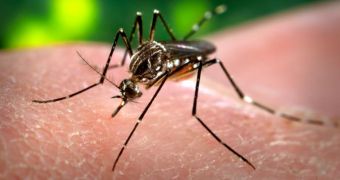Although the first dengue viral infection is painful, it is often harmless. However, if contracted for a second time, it can turn deadly. With all that, there are some cases in which getting infected for the second time with the dengue virus can in fact be beneficial for the body, helping the immune system fight both infections at the same time. More than 50 million people are infected with the dengue virus yearly, and the only way to stop it from spreading it is to kill the mosquitoes.
On the other hand, a study undertaken in Thailand showed that, in doing so, the number of people falling victims to the dengue fever would actually increase. Also known as the "breakbone fever," dengue comes in four serotypes, or varieties. If you contract one of the respective varieties and then you become infected with a different serotype, then the immune system will be able to fight only one of the viruses.
But, if the second infection occurs several weeks after the first, then the immune system will be able to destroy both virus varieties, regardless of the fact that the serotypes are different or not. Furthermore, if you are infected with all of the viruses at the same time, the body will develop an immune system for all of them.
The reduction in the number of mosquitoes carrying the dengue virus would most likely result in less people becoming infected in the cross-immunity period, leading to more deaths as a result of Dengue Hemorrhagic Fever, shows a study conducted by Yoshiro Nagao of the London School of Hygiene and Tropical Medicine.
Between 2002 and 2004, Nagao examined the incidence of DHF in Thailand, in relation to the number of larvae of the mosquito spreading the virus (Aedes mosquito), found in the water containers around several millions of homes. The results showed that, if the infection rates rise to 30 percent, the number of DHF cases also increase. However, if the infection rate jumps over the 30% mark, the number of DHF cases drop.
According to the study, an infection rate of 30 percent nearly doubles the number of DHF cases. In order to register a significant drop as far as these are concerned, the infection rate would have to be brought under 10 percent, if authorities choose to fight the disease by killing the mosquitoes. However, such a low rate of infection is highly unlikely to be achieved.

 14 DAY TRIAL //
14 DAY TRIAL //